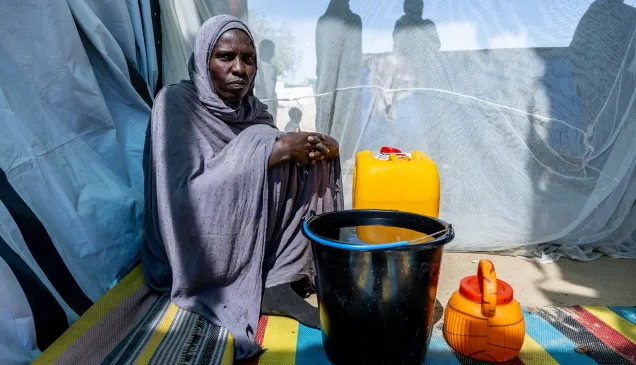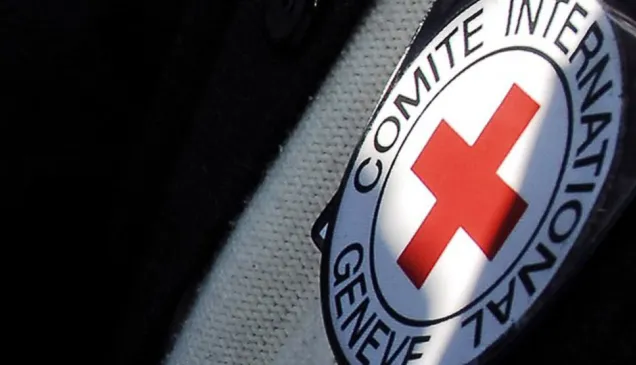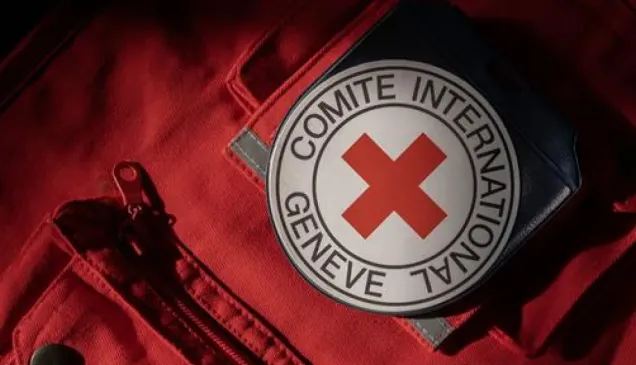Launch of updated Commentaries on the First Geneva Convention: Speech given by ICRC President
Speech given by Mr Peter Maurer, President of the International Committee of the Red Cross, at the launch of the Updated Commentary on the First Geneva Convention.
Ladies and gentlemen,
Every generation likes to think that it is suffering through the worst of times: the biggest crises, the worst wars, the toughest markets, the most serious violations of International Humanitarian Law.
The overemphasis on present compared to past challenges is the result of our capacity to forget. I don't think that the categories 'better' or 'worse' are particularly insightful when examining respect for IHL over time and space.
What we are witnessing in today's armed conflicts is – objectively – an increasing fragmentation and therefore greater complexity: More actors, more weapons, more refined strategies and more networks lead all together - also purely numerically - to a greater number of possibilities.
We see this increasing complexity mirrored in the work that I am proud to present to you today, the updated Commentary on the First Geneva Convention. Imagine, when Jean Pictet's Commentary was published in 1952 - a work of thought and law that has influenced warfare and humanitarianism around the world for decades and will continue to do so - it claimed that torture and inhumane treatment need not be defined.
Pictet claimed that every human shares an instinctive sense of what amounts to torture. We know today, that this is not true. It is illustrated by the fact that the new Commentary delimits - in great detail – when, where and how treatment turns from humane to inhumane, where humane treatment ends and torture begins.
Ladies and gentlemen,
It seems to have become fashionable to lament the powerlessness of international law and its protective capacity. This criticism also extends to international humanitarian law with commentators suggesting that there is "an erosion of IHL". But is this an accurate description of the Law of armed conflicts and its implementation?
As many of you know, I would argue that it is not: never has the normative legal framework been so strong and comprehensive, never before has the community of States been able to agree on so many globally accepted rules.
It is precisely because the law has never been stronger, that we are more sensitive to violations and transgressions, and rightly so. In our fibre-optic world of tweets and tablets, we are more conscious of the world around us. We see it, we feel it, we know about it. For all of us, human suffering is visible, constantly.
Yet, human suffering in armed conflict is nothing new.
But because we know of the law's protective capacity, we are so outraged when it is violated, when wounded and sick are denied medical care, civilian communities are forcibly displaced or trapped in lengthy sieges, when hospitals or schools are unlawfully attacked.
I see our newly found, technology-based awareness and our ability to measure and classify the consequences of conflict as important and positive developments. They are signs that society is maturing; that we are prepared to look in the mirror and cast judgment on ourselves.
But these advances also bring responsibility. They challenge us to act, when inhumanity occurs: to react to the suffering and the violations of the law and to strive to prevent them in the first place.
For this, we have a reference point: the Geneva conventions and their Additional Protocols.
As you all know, the International Committee of the Red Cross (ICRC) was instrumental in the creation of the conventions in 1949 and, signed up to by every single country on the planet, they mark one of the greatest humanitarian legal achievements of the 20th century and form an essential part of our common heritage of humanity.
The Geneva conventions, and their Additional Protocols of 1977 set out limits to war and offer protection, be it to the wounded and sick, detainees, or civilians. They contain the globally agreed parameters as to what is acceptable and what is not acceptable on the battlefield and beyond.
They have proven to be crucial for ensuring protection in times of war, and have had a profound influence on the development of national military policies and procedures and on training of soldiers. It is on the basis of the Conventions' rules that the ICRC calls upon States to abide by certain standards of treatment and that it carries out its humanitarian mission in the field and offers humanitarian assistance during armed conflict.
And yet, we are failing. Not enough countries, not enough armies, not enough armed groups, are abiding by those fundamental human values enshrined in the Geneva Conventions.
We need to understand that the Geneva Conventions are not just some historical documents born of another time, created for another purpose. They are of burning relevance and importance today – and we need to ensure they are used as such and that their humanitarian potential is recognized and acted upon by all.
However, the Conventions are not equipped with any meaningful enforcement mechanisms: it is not primarily sanctions that enforce compliance, but their practical significance which generates it; the shared humanity over time and space and the common understanding with regard to the meaning and significance of the Conventions.
The ICRC in this perspective has the role of facilitating such common understanding amongst the High Contracting Parties: through trainings, operational reviews of key challenges, through engagement with all stakeholders, including key opinion-makers: religious leaders, academic circles, legal students and scholars, and all weapons bearers willing to listen.
In these efforts, the Commentaries are an essential reference point, because they offer guidance and contextualization.
We know that the first editions of these Commentaries, which were written in the 1950s, have been useful for military and civilian practitioners as well as for judges and academics.
A lot of time has passed since then, and we have gained a lot of experience in applying and interpreting the Conventions over the decades in contexts very different to those that led to their adoption. Therefore, it was time to update the existing commentaries and to offer new versions that take these experiences into account.
Five years ago, our institution committed itself to this monumental task. With the publication of the first installment, the updated Commentary on the First Convention, we have reached the first milestone today.
The updated Commentary and the ones to follow over the next years will provide nuanced insights and references on the basis of newer applications and interpretations by States and courts.
The First Geneva Convention requires that the wounded and sick be protected and respected. It also regulates the modalities of access for humanitarian organizations, the ICRC and others, so that they can bring aid and assistance to those trapped in conflicts.
During my travels to war-torn countries such as Afghanistan, Yemen, Somalia and Syria I have witnessed not only the relevance, but the urgency to respect these rules. But what do they mean in practice? What standard of medical care is required for the treatment of the wounded and sick? How can the wounded and sick be collected and cared for?
The answers to these and other questions have both legal and operational dimensions, which the Commentary on the First Convention addresses – by offering interpretations, but also by indicating where a question is not settled and further discussions are needed.
The ICRC is in a unique position to oversee the preparation of these Commentaries. We combine the perspectives of law, policy and operations, and the Commentaries benefit from the input of colleagues representing these different aspects of our work.
However, we did not do it alone. The ICRC today is more of a 'Guardian 2.0' of the Geneva Conventions, we do not own IHL, and we are not the only ones to interpret it; instead, we entertain a network of scholars and practitioners to offer guidance.
The law, which is essentially a balance between military necessity and the protection of victims of war, has entered the public space. Awareness, and discussion of the law and its application - and thus of violations - have become much more democratic in the past half-century, encompassing experts, professionals and the public at large. We see it as our duty to offer evidence-based guidance and contextualization of such discussions in the public space.
Public discourse can influence interpretation: take the treatment of wounded combatants for example. What has been a cornerstone of IHL since its inception, and of the ICRC's action since Henry Dunant's time, has in the past years increasingly been questioned in the public space. The right of wounded combatants to obtain treatment is not understood as clearly as the law states it. It is our duty to remind everyone - from parties to a conflict to the general public - what the law says, and how clear, or how complex its interpretation is.
A novelty in our working methods was the opening of the process to unprecedented external input.
We have invited external contributors, alongside ICRC staff lawyers, to write the new Commentary. We have submitted the drafts to a comprehensive process of peer review by a wide selection of scholars and practitioners from around the world. 60 experts from all corners of the world were involved in this process.
I believe that the new Commentary is a practical tool that provides accurate interpretations of the rules based on a comprehensive review of State practice, case law, and ICRC experience.
In it you can find references and guidance on pertinent discussions relating to the protection of the wounded and sick, but also on the Conventions' scope of application, the relationship with other areas of international law, and on pressing topics such as sexual violence and non-refoulement which were not reflected in the first edition.
As the majority of conflicts today are of a non-international character, the commentaries dealing with non-international armed conflicts have grown significantly compared to the initial commentary. Article 3 is a central provision on these conflicts and the new Commentary provides a comprehensive interpretation of all the aspects of this "mini Convention".
But, it is important to bear in mind that the Commentary is a snapshot of our current understanding of the law: It puts forward updated interpretations and indicates where there are divergent views. However it is not the final word, but rather a basis for further conversations about the implementation, clarification and development of humanitarian law in the future, as practice and interpretations may continue to evolve over time.
The Geneva Conventions are living instruments and we need to make sure that the law remains relevant, by ensuring that our interpretations are up-to-date and applied in today's armed conflict.
That is why I call upon you, to bring this new tool to the attention of your armed forces and legal advisers so that we together redouble our efforts to generate respect for the Geneva Conventions, our common heritage.
Thank you.



